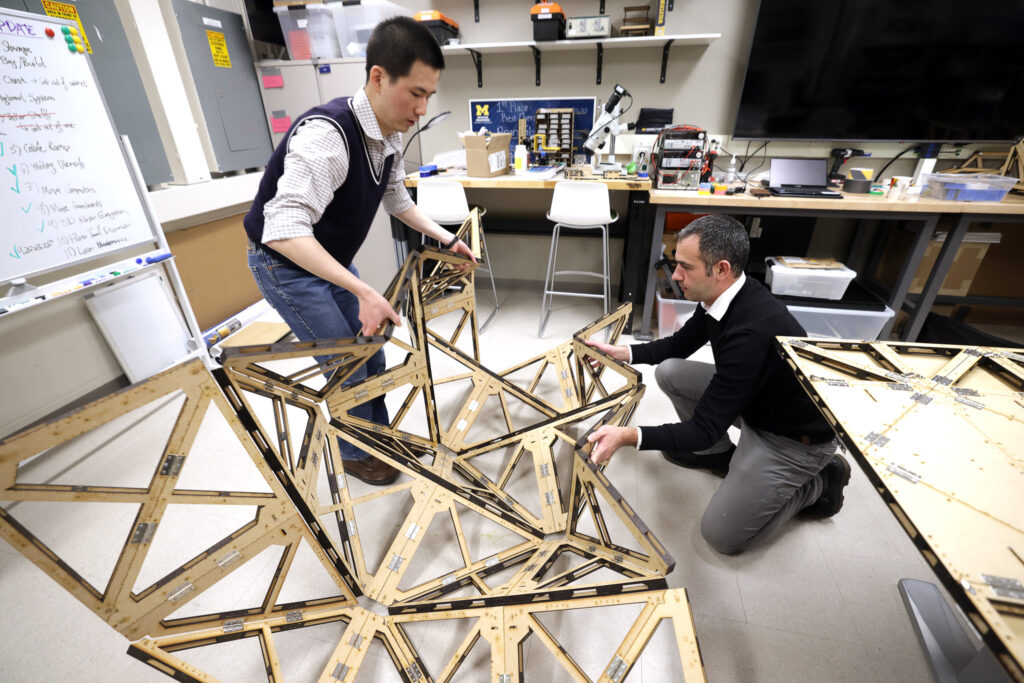From load-bearing origami to waterproof solar cells, here’s a snapshot of recent technological and engineering innovation.
Innovation in Australia and across the globe continues apace – here are four of the latest engineering technologies and breakthroughs.
Load-bearing origami
University of Michigan researchers have shown that load-bearing structures can be made from origami-inspired shapes that fold compactly, in a first-of-its-kind advance.
While engineers have previously attempted to create origami patterns that could be quickly deployed but still have the necessary weight capacity, a breakthrough came when they began to consider thickness in their designs.

“When people work with origami concepts, they usually start with the idea of thin, paper-folded models – assuming your materials will be paper-thin,” mechanical engineer Yi Zhu said. “However, in order to build common structures like bridges and bus stops using origami, we need mathematical tools that can directly consider thickness during the initial origami design.”
The designs could be adapted for use in modular buildings, temporary structures such as concert and event stages, or for rapid rebuilding of facilities in the aftermath of a natural disaster.
Nanodiamond fabric
Clothing could one day have nanodiamonds incorporated into its fabric to help wearers cool down quicker, thanks to a smart material developed at RMIT University.
By coating one side of the fabric with the tiny lattices of carbon, engineers were able to use the thermal conductivity of the nanodiamonds to draw body heat quicker. The smart material cools down a wearer two to three degrees Celsius more than untreated cotton.
“While two or three degrees may not seem like much of a change, it does make a difference in comfort and health impacts over extended periods and, in practical terms, could be the difference between keeping your air conditioner off or turning it on,” Senior Lecturer Dr Shadi Houshyar said.
“There’s also potential to explore how nanodiamonds can be used to protect buildings from overheating, which can lead to environmental benefits.”
Waterproof solar cell
A photovoltaic cell developed at Japan’s RIKEN Center for Emergent Matter Science is flexible enough to be incorporated into clothing and will still function after being exposed to water. These properties make it suitable for powering wearable electronics, such as medical monitoring devices.
The researchers used a silver electrode as the cell’s anode layer, and overlaid it on the active layer, which collects energy from sunlight. Improving the adhesion between the layers with a thermal annealing process created a film just three millimetres thick.
“What we have created is a method that can be used more generally,” RIKEN’s Kejiro Fukuda said. “Looking to the future, by improving the stability of devices in other areas, such as exposure to air, strong light and mechanical stress, we plan to further develop our ultrathin organic solar cells so that they can be used for really practical wearable devices.”
Stretchable electronics
A new skin-like integrated circuit developed by Stanford University researchers is five times smaller and 1000 times faster than previous versions of the technology.
The stretchable electronic fabric is soft enough that it will not scratch or damage tissue, making it suitable for medical devices, and the circuits are able to operate a micro-LED screen and detect braille with more sensitivity than a human fingertip.
Constructed from semiconducting carbon nanotubes, the elastic material has a fishnet structure that permits the circuits to continue operating even as their shape is deformed.
“We’ve made a significant leap forward. For the first time, stretchable integrated circuits are now small enough and fast enough for many applications,” Professor Zhenan Bao said.
“We hope that this can make wearable sensors and implantable neural and gut probes more sensitive, operate more sensors and potentially consume less power.”
